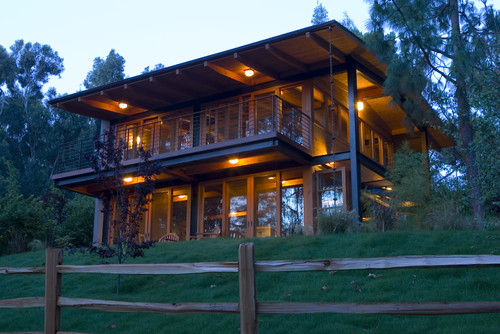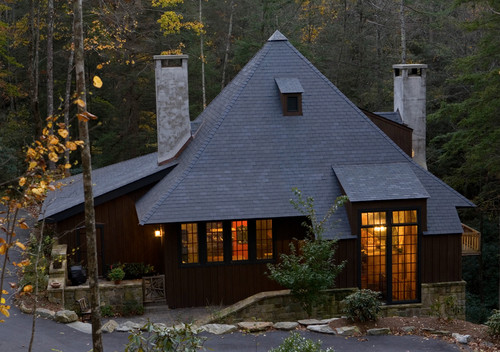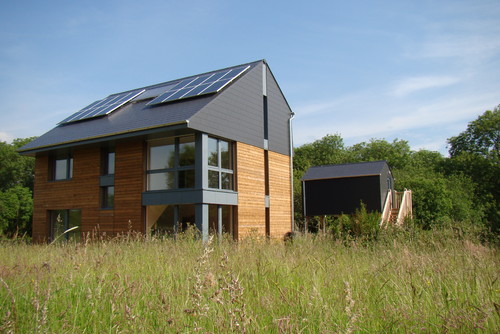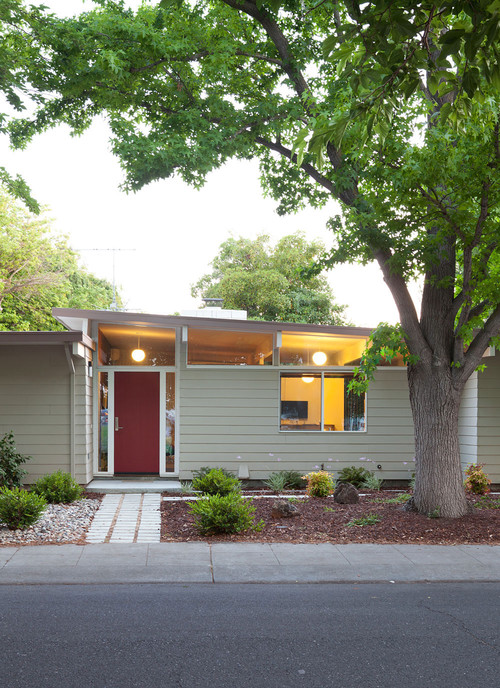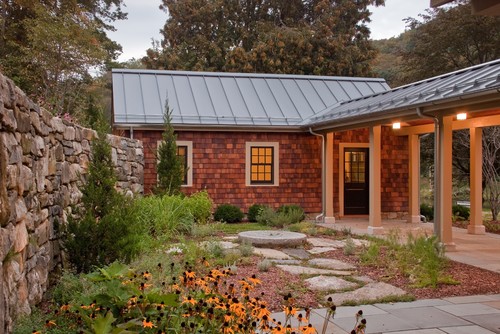The essence of of eco design is efficiency, both in terms of energy and use of resources. The most elegant solutions arise when all the elements of design and construction are properly integrated: in eco design it is how everything works together that really matters. In one sense, eco design is a way of going back to first principles of building. In these styles-conscious times, it is easy to become obsessed with the latest trend and forget that the purpose of a house is to provide shelter.
What is Eco design?
Eco friendly design is design that makes use of resources that come from the earth in such a way that they can be retired to the earth without causing harm, in a cycle that echoes the natural systems of living things. 'Sustainability', a related, but not exactly equivalent concept, implies using resources, including land and energy, with maximum efficiency, at the rate that does not compromise the needs of future generations.
In general terms, sustainable building involves taking into account the following considerations:
- Energy efficiency of buildings: buildings make their greatest impact on the environment through the energy they consume over their lifetime, so in most cases the first priority is to design and build for increased energy efficiency. Eco strategies that may be adopted include: improving insulations, specifying low-emissitivity or other types of high-performance glazing, using renewable sources of energy.
- Material choice and use: Eco strategies that may be adopted include reducing material used, and waste associated with construction, choosing materials that have low-environmental impact or are salvaged and recycle and avoiding materials with toxic constitute.
- Site-impact: Eco design means sensitive land use and choosing Brownfield over greenfield sites for new-building projects minimizing disruption to existing trees and other aspects of the local habitat.
- Water use and efficiency: The need to save water depends to a great extent on locale, but reducing water usage is likely to become a more critical issue in the future. Eco strategies that may be adopted include: using water-efficient plumbing systems and appliances; installing composting toilets, collecting rainwater and recycling
- Longevity and flexibility: Building should not be regarded as disposable, nor should they be designed for obsolescence. By prolonging a building's usefulness its environmental impact is minimized over time. Eco strategies that may be adopted include: design for durability, ease of maintenance and repair, enhance flexibility so that the building can be adapted to suit future needs and restore or renovate existing buildings.
You don't need to adopt all the above strategies to make a positive impact on your immediate environment. You may choose to adopt only the most attainable strategy and still enjoy lower fuel bills, and at the same time, you will be helping to make the world a healthier place for future generations. Here are some great examples of Eco friendly, beautiful homes:

